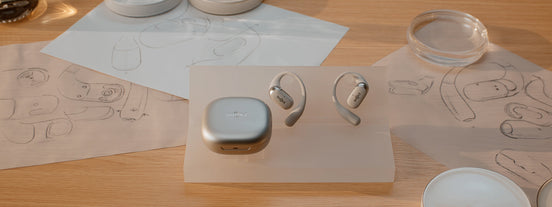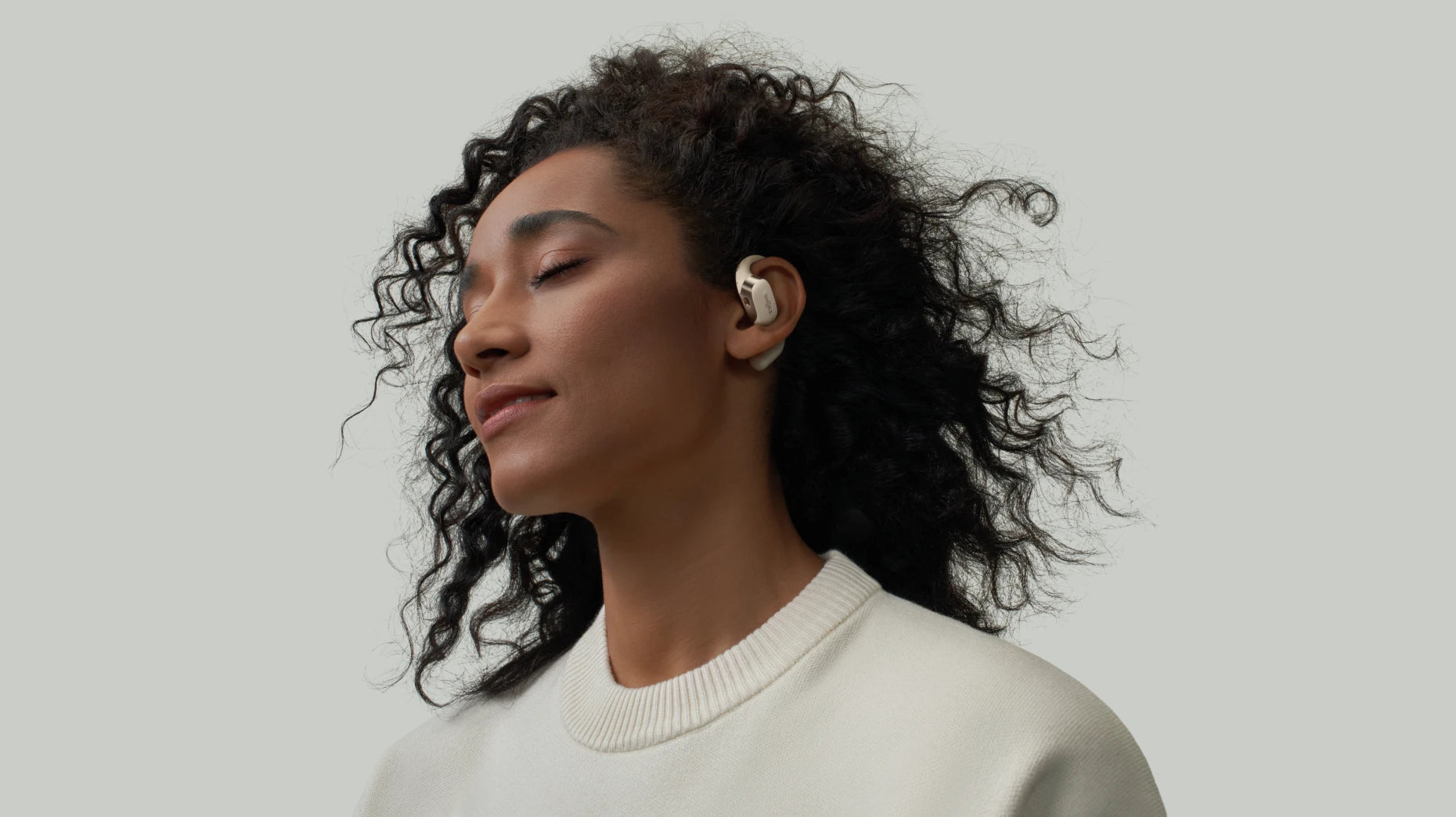Is Noise-Cancelling Bad for Your Ears? The Truth You Should Know
Slip on a pair of noise-cancelling headphones and the world just sort of quiets down.The street hum softens, the coffee grinder vanishes, and suddenly it’s just you, your playlist, and a bubble of calm.It feels amazing like someone hit pause on life for a bit.But after a while, you can’t help but wonder “ Is noise-cancelling bad for your ears”? Here’s the truth—noise-cancelling itself isn’t harmful. The real issue usually starts with us, when we turn the volume up too high or wear the headphones for too long.
Types and Meaning of Noise-Cancelling Headphones
“Noise-cancelling” sounds simple, but not all quiet works the same.For wireless headphones,some use padding, others use tech.
What Is Noise-Cancelling?
Picture tossing two pebbles into a pond. The ripples meet — one rises, the other dips — and they smooth each other out.
That’s what your headphones are doing, but with sound.
They listen to outside noise (traffic, chatter, that humming air conditioner) and send out opposite sound waves to cancel it.
You don’t get total silence. Just… calm. The world fades, but it’s still there in the background.
Types of Noise-Cancelling Headphones
1. Passive Noise-Cancelling (PNC)
This one’s old-school, no fancy chips, no algorithms.Just thick padding or tight ear cups physically blocking sound. It’s good for sharper noises, less so for the deep background hum.It reduces noise by physically blocking it.
2. Active Noise-Cancelling (ANC)
Uses tiny microphones to “listen” to ambient noise and produce reversed sound waves that cancel it. Especially effective for steady, low-frequency sounds like plane engines or air conditioners. Unlike passive, ANC actively cancels noise electronically.
Passive vs Active: Noise-Blocking vs Noise-Cancellation
-
Passive Noise-Cancelling: Blocks sound physically; works best for sudden, sharp noises; doesn’t require power.
-
Active Noise-Cancelling: Uses electronics to cancel sound waves; excels at steady, low-frequency noise; may create a slight “pressure” feeling in the ears.
This comparison helps users understand that both approaches aim to make listening more comfortable, but in very different ways—one relies on physical barriers, the other on smart technology.
Are Noise-Cancelling Headphones Bad for Your Ears?
Not really. The issue isn’t the headphones themselves — it’s how you use them.
High Volume Listening
Because ANC makes things feel softer, people tend to crank the volume higher than they realize.
That’s where the danger starts. Inside your ears are tiny, delicate hair cells that detect vibration. Once they’re damaged, they don’t grow back.
Extended Usage and Listening Fatigue
You know that dull, “heavy” feeling after hours of listening? That’s fatigue. Not permanent damage — just your ears asking for a breather. A quick ten-minute pause every hour helps more than most people think.
Lack of Volume Control Awareness
Silence is tricky — when everything’s muted, loud feels soft. You might think your volume’s fine, but your ears disagree. A quick check of the numbers (or a phone warning) can keep you honest.
How To Use Noise-Cancelling Headphones Safely
You don’t have to ditch your favorite pair. Just listen smarter.
Set Safe Volume Limits
Follow WHO’s guidance: keep your headphone volume below 60 % of the maximum. It’s clear enough to enjoy detail but still easy on your ears. If your phone has a “safe volume” setting — use it once and forget about it.
Take Regular Breaks
Ears need rest just like eyes need to blink. Pause for a few minutes every hour, stretch, grab water, it helps reset your hearing and reduces fatigue.
Adjust ANC Wisely
You don’t always need max noise-cancelling. At home or in quieter spots, drop it down a notch.
It saves battery and keeps things feeling more natural (and less “ear pressure-y”).
Monitor Listening Habits
If your ears ring or sound muffled after long sessions, that’s your body waving a red flag.
Turn it down, take a break, or try open-ear designs that give your ears some air.
Choose the Right Fit for Comfort
Tight earbuds can trap pressure and heat.Open-ear models, like Shokz earbuds rest gently outside your ear canal, so you get sound without that “plugged-up” feeling. Your ears stay cooler, cleaner, and less stressed.
Recommended Earbuds for Healthy Listening
If you’re looking for great sound while protecting your ears, open-ear headphones are a smart choice. Unlike fully noise-cancelling models that seal off your ears, open-ear designs let you enjoy music or podcasts while still hearing what’s happening around you. This balance helps prevent listening fatigue and keeps you safer in everyday situations.
For anyone who wants powerful sound without sealed ears, this one nails it. It sends audio through your cheekbones instead of your eardrums — so you can hear clearly, but comfortably.
-
Open-ear comfort for airflow and pressure relief
-
Bone-conduction sound for safe, direct listening
-
16 % less clamping force — no tight squeeze
-
DualPitch™ tech for balanced sound even at low volume
-
Ultra-lightweight, high-strength material with a soft silicone,barely-there fit.
-
Breathable design prevents heat and irritation
-
Lets you hear your surroundings — perfect for outdoor safety
Tips for Protecting Your Ears When Using Headphones
You don’t need to overhaul your habits — just make a few smart tweaks.
Follow the 60/60 Rule
Keep it under 60 % volume and take a break every 60 minutes. Easy math, big difference.
Clean Your Earbuds Regularly
A quick wipe keeps sound crisp and ears healthy. Sweat and dust can mess with both.
Avoid Sleeping With Headphones On
Even soft ones press weirdly when you move. Give your ears a break overnight.
Stay Aware of Your Environment
ANC is amazing on flights — less ideal when walking across the street. That’s where open-ear designs shine: sound + awareness, no trade-off.
FAQ
Are noise-cancelling headphones safe?
Yes, they cancel noise waves, not your hearing. The risk comes from volume, not the tech.
Do they protect hearing?
Usually. Less outside noise means you don’t need to turn the volume up as much.
Is ANC harmful?
No. That “pressure” feeling is your brain adjusting, not real force on your ears.
Do they change air pressure?
Nope. The air stays the same — it’s perception.
How do they work?
Microphones pick up noise, then create an opposite wave to cancel it. It’s quiet science.
Conclusion
Now, I believe you’ve found the answer to “Is noise-cancelling bad for your ears”. Noise-cancelling isn’t bad. Overuse is. Keep your volume reasonable, take breaks, and choose headphones that let your ears breathe. Open-ear designs like Shokz OpenRun Pro 2, OpenRun, OpenFit 2+, and OpenFit 2 keep things balanced — clear sound, all-day comfort, and natural awareness. Listen smart, stay aware, and let the world stay partly in your mix.








